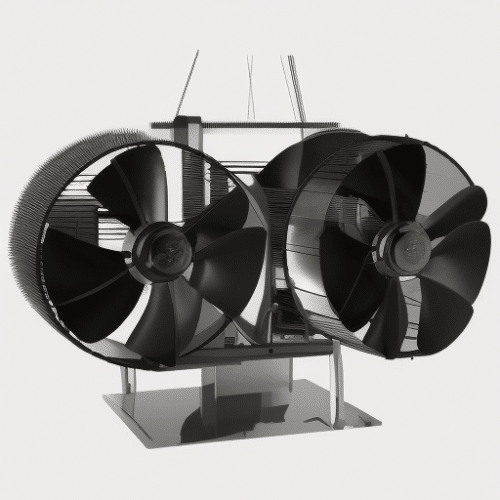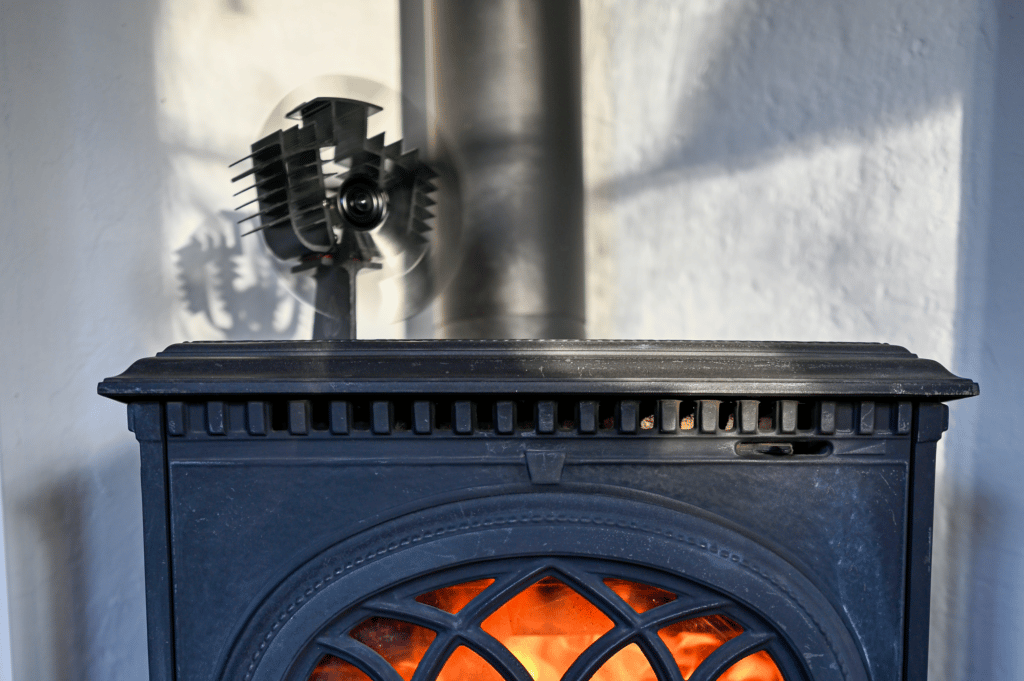Last Updated on
When it comes to heating your home, there are so many options out there. But one question remains: how does a stove fan work? A stove fan is an incredibly useful tool that can help you save money on energy bills while keeping your house warm and cosy during the winter months. In this blog post, we’ll be exploring what a stove fan is and how it works, as well as looking at some of its benefits and types available for purchase in the UK market today. So if you’re wondering whether or not investing in a stove fan will pay off – read on.
Table of Contents:
- What is a Stove Fan?
- Benefits of Using a Stove Fan
- Types of Stove Fans
- FAQs in Relation to How Does a Stove Fan Work
- Conclusion
What is a Stove Fan?
A stove fan is a device that helps to circulate the heat generated by your wood-burning or gas stove. It works by drawing in air from around the room and pushing it out through the top of the fan, creating a gentle breeze which helps to spread warm air throughout your home. The fan can be adjusted so that it runs at different speeds depending on how much heat you need.
Stove fans are designed to work with both traditional open fireplaces and modern stoves, as well as other heating appliances such as radiators and convection ovens. They come in a variety of shapes and sizes, ranging from small tabletop models to larger wall-mounted units. Some even have adjustable blades for more precise control over airflow direction.
A stove fan is an effective way to heat your home more efficiently and cost-effectively, but it’s important to understand how they work before making a purchase. Now let’s explore the benefits of using a stove fan.
Benefits of Using a Stove Fan
It works by drawing in cooler air from outside and pushing it into the room, creating an even temperature throughout. This helps reduce energy costs as well as make the environment more comfortable for those living inside.
One of the primary benefits of using a stove fan is improved air circulation. By circulating cool air around your home, you’ll be able to keep temperatures consistent without having to rely on expensive heating systems or fans. Additionally, this will help reduce humidity levels and prevent mould growth which can lead to health problems over time.
Another advantage of using a stove fan is increased energy efficiency. By keeping temperatures consistent throughout your home, you won’t have to use extra energy running heaters or cooling systems unnecessarily; this could save you money on your monthly bills. Furthermore, some models are designed with adjustable speeds so that you can control how much power they consume – allowing for greater flexibility when it comes to managing your electricity usage at different times of day or night.
There are several types of stove fans available on the market today; each one offers its own unique advantages and disadvantages depending on what kind of setup you have in mind for your space. The most common type is known as a centrifugal fan which uses blades spinning at high speed to create airflow through the room; these tend to be quite noisy but offer good performance overall due to their powerful motor capabilities. Alternatively, there are axial fans which work similarly but operate more quietly than centrifugal models – perfect if noise levels are an issue in your household. Finally, there are also hybrid designs combining both technologies together for maximum efficiency and minimum sound output – ideal if noise reduction is important but still wants strong performance from their appliance too.
Overall, stove fans are an excellent way to improve air circulation in your home and garden, while also providing energy efficiency benefits. By understanding the different types of stove fans available on the market today, you can make an informed decision about which type is best suited for your needs.
Types of Stove Fans
Stove fans are an essential part of any home and garden, providing a way to circulate warm air throughout the room. There are several types of stove fans available on the market today, each with its own unique features and benefits.

The most common type is the traditional fan-forced convection stove fan. This type of fan works by drawing in cool air from outside and pushing it through a series of blades that rotate at high speeds to create heat. The heat then circulates around the room, making it more comfortable for those inside. These fans come in various sizes and can be used for both heating and cooling purposes. They also tend to be quieter than other types of fans due to their low-speed operation.
Another popular option is a pellet stove fan which uses pellets as fuel instead of electricity or gas like many other models do. Pellets are made from compressed sawdust or wood chips which burn slowly over time creating warmth without producing smoke or odours like some other fuels do. These stoves typically require less maintenance than electric or gas-powered models but may not produce as much heat output as some others do depending on the size and design chosen.
A third option is an infrared stove fan which uses infrared radiation waves to generate heat rather than relying on mechanical parts as traditional models do. Infrared radiation heats up objects directly rather than just circulating air so these stoves can provide more consistent temperatures throughout the room while using less energy overall compared to conventional methods such as forced convection systems mentioned above Additionally, they don’t require ventilation since there’s no combustion taking place so they can be installed almost anywhere without worrying about fumes escaping into your living space either.
FAQs in Relation to How Does a Stove Fan Work
Where should you place a stove fan?
The best place to install a stove fan is near the top of the wall, above the range. This allows it to draw in air from around the room and exhaust it out through vents or an outside wall. It should be installed at least 30cm away from any combustible materials such as curtains or furniture, and its blades should always be facing downwards for optimal performance. Additionally, make sure that there are no obstructions blocking airflow into or out of the fan. By following these guidelines you can ensure your stove fan is installed correctly for maximum efficiency and safety.
Does a stove fan use electricity?
Yes, stove fans do use electricity. They are typically powered by a 120-volt AC power source and draw an average of 50 watts of energy when in operation. Stove fans help to circulate warm air from the stove throughout the room, making it more comfortable and helping to reduce energy costs.
Conclusion
So how does a stove fan work? In conclusion, it’s clear that stove fans are a great way to improve the efficiency of your wood-burning stove and reduce energy costs. But do they really work? The answer is yes. Stove fans can be incredibly effective at circulating heat around the room, helping you get more out of your fuel while keeping your home warm and cosy. So if you’re looking for an efficient way to heat up your home without breaking the bank, investing in a stove fan might just be the perfect solution.
Paul is the type of person who never met a problem he couldn’t fix. He can always be found tinkering with something in his house, even if it isn’t broken! His tips and tricks are often shared on our site. He’s the one you call when something breaks because he has been known to improvise fixes for everything from leaky faucets to malfunctioning dryers.



